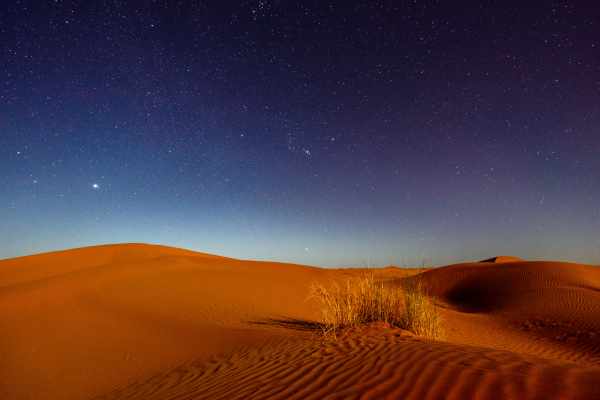Do you know that the biggest desert in the world is not the Sahara Desert? It is the Antarctic Desert, and its total area spreads 5.5 million square miles.
Deserts are a large, very dry part of land that receives little to no rainfall. Most of the time, desert regions do not have any rainfall for 12-18 months straight.
The arid lands have less than 200 millimeters of yearly rainfall. Thus, out of 365 days in a year, there is only an average of 15-20 days of rainfall.
Some places even go without rainfall for years. While some semi parched areas get a little more rainfall, around 500 millimeters yearly.
The climate is extremely dry and cannot support any vegetation. This is because the environment can only support scattered plants.
According to some researchers, any location that is entirely free of vegetation is a desert. Moreover, it also includes extremely cold locations like the Antarctic.
Table of Contents
Facts about the biggest desert in the world
Do you know, Colchones in Chile did not have any rainfall for 45 years? Well, here are some more fun facts to know about the largest cold desert in the world:
Area covered
The desert covers an area of 5.5 million square miles or (13.8 million square kilometers), making it the biggest desert in the world. Moreover, it is bigger than the Sahara Desert, Kalahari Desert, Gobi Desert, and the Arabian Desert combined.
Rainfall
This desert gets less than 250 millimeters of precipitation each year. Some places even get less than 50 millimeters. Moreover, there is a place known as dry valleys, which has not had any rainfall for two million years.
Made up of
Almost 98 percent of the area is ice and the average thickness is from 1.5 to 4 kilometers. Less than 2 percent of the land is without ice. That is also on the coastal side.
The area is made up of big rocks, gravel plains, and rock layers. The dry valley has a frozen lake known as Don Juan Pond. Moreover, it is the world’s largest pond and the saltiest water body too. The saline level is more than 45%.
Temperature and life
The average temperature is from minus 30 degrees Celsius to minus 70 degrees Celsius in winter. But in summer, it is around minus 30 degrees Celsius.
The dry valley has the harshest weather condition and many rocky lands, making it unsuitable for any living being. Moreover, some scientists call it “a valley of death” for this reason.
Around 350 different species have been found in the Antarctic Desert, and only 5 percent of the land has plants.
About 60 to 90 percent of freshwater is present in the Antarctic Desert, which means this desert has the most fresh water in the world.
Some water bodies are so deep and salty that they do not freeze, even if the temperature is minus 20 degrees Celsius.
This biggest desert in the world used to have a warm temperature. Researchers said 40 to 50 million years ago, Antarctica as an average temperature of 15 degrees Celsius to 17 degrees Celsius.
Only two kinds of plants are found in Antarctica; Deschampsia Antarctica or Antarctic hair grass and Colobanthus quitensis or Antarctic pearlwort. They are only located on the western Antarctic Peninsula.
They even found fossils that prove that the land used to be covered with green plants and dinosaurs lived there.
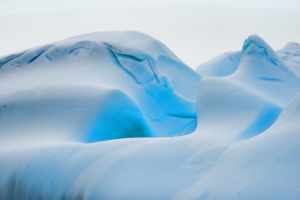
People of Antarctica
Antarctica is controlled by an administration known as the Antarctic Treaty since no human being can live there.
Researchers stated the sea level would increase by 5 meters if the western ice sheet melts.
30 countries work in research stations located on the continent. It is said there are about 75 to 80 research stations.
There are about 4,000 people in these research stations during the summer months, and in winter, about 1,000.
Only 11 people were born in Antarctica, Emile Marco Palma being the first in 1979.
Some swimmers even swim in Antarctica during the summer months. There is a program name Australian Antarctic Program which organizes every year.
Mountain range
The world’s biggest mountain range is also present in the biggest desert in the world. The Gamburtsev Mountains or Russian Gory Gamburtseva are located on the east side of the continent. It is stretch out 750–800 miles (1,200–1,300 km). The highest peak is about 3000 meters.
Mount Erebus is the most active volcano in the world and it is located in the southern part of the continent. Moreover, it is recognized as “lava lakes” as it held molten magma in such cold weather conditions.
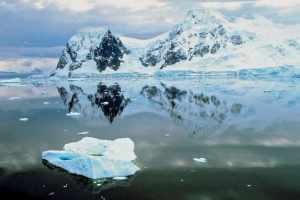
Red water in the Antarctic
In the early 1900s, scientists discover red water flowing in a glacier located on the east side of the continent. The water coming out from the Taylor Glacier was deep red, making the white lilies turn red.
For decades scientists did not know why this is happening. Finally, in 2017 they found out the reason. The water bodies are extremely salty and also have oxidized iron. Thus, when the water comes in contact with oxygen, they turn into rust, which results in the color.
Sunlight
During winter, there is not sunlight throughout the day, whereas in summer, it is the opposite.
The biggest desert in the world receives no sunlight in winters because the rays do not reach from the vernal equinox to the autumnal equinox due to the slanting position of the earth.
Animals found in the biggest desert in the world
Here are some of the animals that survive in such extreme weathers where humans cannot:
Penguins
When it comes to Antarctica, the first thing people remember is penguins. There are eighteen different penguin species present globally, and eight of them live on this continent.
Penguins cannot fly, but they are excellent swimmers. They live near the coast, and they eat fish.
Penguins are usually known as ‘flippered flyers’ because they move so easily in water. In water, they can go from 25 kilometers to 40 kilometers per hour. The average weight of a penguin is about 40 kilograms.
Types of penguins found here:
- Emperor penguin
- Adelic penguin
- Gentoo penguin
- Chinstrap penguin
- Macaroni penguin
- Rockhopper penguin
- Magellanic penguin
- King penguin
Seals
Out of 36 seal species, six species live in the Antarctic. They generally weigh from 100 to 200 kilograms and is 2 meters tall. Male seals live up to 15 years, and female ones live up to 25 years.
They are mostly seen in the southern part of Antarctica and eat Krill throughout the year. Moreover, the population of seals is anywhere between two million to four million in Antarctica.
Types of seal found here:
- Ross seal
- Leopard seal
- Elephant seal
- Crabeater seal
- Weddell seal
- Fur seal
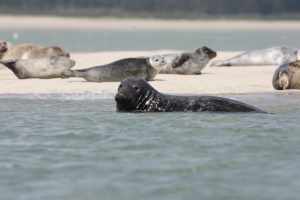
Antarctic Orca
Antarctic orca is known as ‘killer whale’ even though they are exactly not a whale. They belong to the dolphin family. The male ones grow up to 31 feet in length and females up to 23 feet.
Blue Whale
Blue whales are the largest and loudest animal in the world. They belong to the group of Baleen whales.
These whales are 100 feet long; to give you an idea, it is as big as three average-sized buses.
They live up to 80 to 90 years, and the average weight is from 50,000 kilograms to 150,000 kilograms. The tongue of the whale is the weight of an adult elephant.
The main food is Krill, and it can eat up to 40 million Krill every day. Moreover, the average speed of a blue whale is 20 kilometers to 50 kilometers per hour.
Other animals found here are Wandering albatross, Kelp gull, Blue-eyed cormorants, Minke whale, Humpback whale, Antarctic petrel.
Top 10 biggest desert in the world –
- Syrian desert
- Great Victoria desert
- Patagonain desert
- Kalahari desert
- Gobi desert
- Arabian Desert
- Sahara
- Antarctica
- Great Basin desert
Ranking of the largest desert on Earth Area wise-
- Antarctic Desert – 14,200,000 KM
- Arctic Desert – 13,900,000 KM
- Sahara Desert – 9,200,000 KM
- Great Australian- 2,700 KM
- Arabian Desert- 2,330, 000 KM
Smallest Desert in The World
Carcross, located in Yukon, Canada, is the smallest desert in the world.
The area of this desert is only one square mile. Technically it is not a desert, but it is called so as it has dunes.
The dunes developed due to the melting of glaciers and drying up of water bodies. This is a popular tourist spot in Canada, and you can even hike there. During summers, the place is covered in sand dunes, while winters exhibit thick snow.
When you stand in the middle of the desert, you will see that the desert is surrounded by mountains covered in snow. This makes the place unique and beautiful.
Hottest Desert in The World
Lut desert in Iran, also known as Dasht-e Lut is the driest and hottest desert in the world. In 2005 it was recorded the highest temperature 71 degree Celsius.
“Lut”, in the Persian language, means land without any plant and water.
Lut Desert is located in the southeast of Iran. The total area is 51,800 square kilometers.
On the western side of the desert, there are about 30 villages, and less than 1000 people live there. Whereas in the desert zone, there are about 14 villages, and almost 6000 people live there.
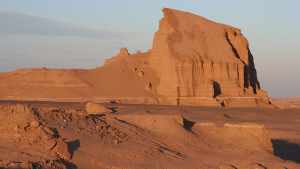
Best deserts in the world
From a tourism point of view, you must know about the deserts you must visit:
Arctic desert
The Arctic desert is the second biggest desert in the world, and the total area is 5.4 million square miles. Greenland, which is quite known, is situated in the Arctic desert. Other places include Sevigny Island, Melville Island, and the North Pole.
In winter months, the temperature is negative 50 degrees Celsius, and in summer months, it can reach up to 10 degrees Celsius.
About 5 percent of the land has plants such as algae, mosses, and lichens.
The living being found in this region is a polar bear, arctic foxes, loons, sandpipers, snowbirds, seals, caribou, walruses, trout, salmon, grasshoppers, mosquitoes, and various other living beings.
In total, about 700 plants and 120 animals live in this desert.
Unlike the biggest desert in the world, about four million people lives Arctic region, known as Inuits.
Thar Desert
The Thar desert or Great Indian Desert, situates in India’s northwestern and eastern sides and Sindh provinces in Pakistan. The total area is 200,000 square kilometers.
There is a maximum inhabitation in this desert; about 80 individuals live per square kilometer. Moreover, around 200 species thrive in this desert.
Tabernas Desert
Tabernas Desert is referred to as ‘mainland Europe’s only desert’ and is situated on the southeastern side of Spain. Moreover, a lot of movie shooting has been done in this desert, mainly Spaghetti Western movies.
A lot of animals live here, and the most popular is the Algerian hedgehog.
Taklamakan Desert
Taklamakan desert is located in China and covers 337,000 square kilometers. The weather of this is harsher than most deserts. There is almost no water and plants, and it is just a large barren land.
White Desert
This desert locates in Egypt, north of Farafra and called White Desert National Park.
The dunes in this area are various shades of white, from ivory white to creamy white.
If you want to explore this desert, then there is a specific route you have to take.
Chihuahuan Desert
This desert locates in Mexico and is the largest desert in North America. It covers up to 282,000 square kilometers of area.
The desert inhabits many plants and animals, which includes gray fox and rainbow cactus. Moreover, if you visit this desert, check out White Sands National Monument in New Mexico, it has some spectacular view of white gypsum dunes.
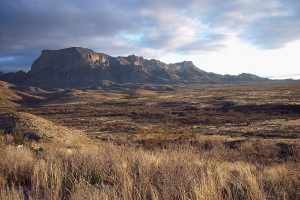
Pinnacles Desert
This desert situates 250 km north of Perth in Western Australia. It covers about 174 square kilometers. This is a unique desert as it has ancient statues on the western coastline and various plants and animals such as galahs and wild emus.
Rub’ al Khali
Rub’ al Khali, also referred to as ‘Empty Quarter’ in English, is the biggest sand desert on the planet. It covers up to 583,000 square kilometers. Moreover, the desert spreads through Saudi Arabia, Yemen, United Arab Emirates, and Oman.
The weather is extremely harsh, which means almost no species can live. However, the beauty of the desert is breath-taking.
Final thoughts
There are many deserts in the world, but sadly we cannot visit all of them. If you plan to go on a desert vacation, make sure you do thorough research before your adventurous attempt.

